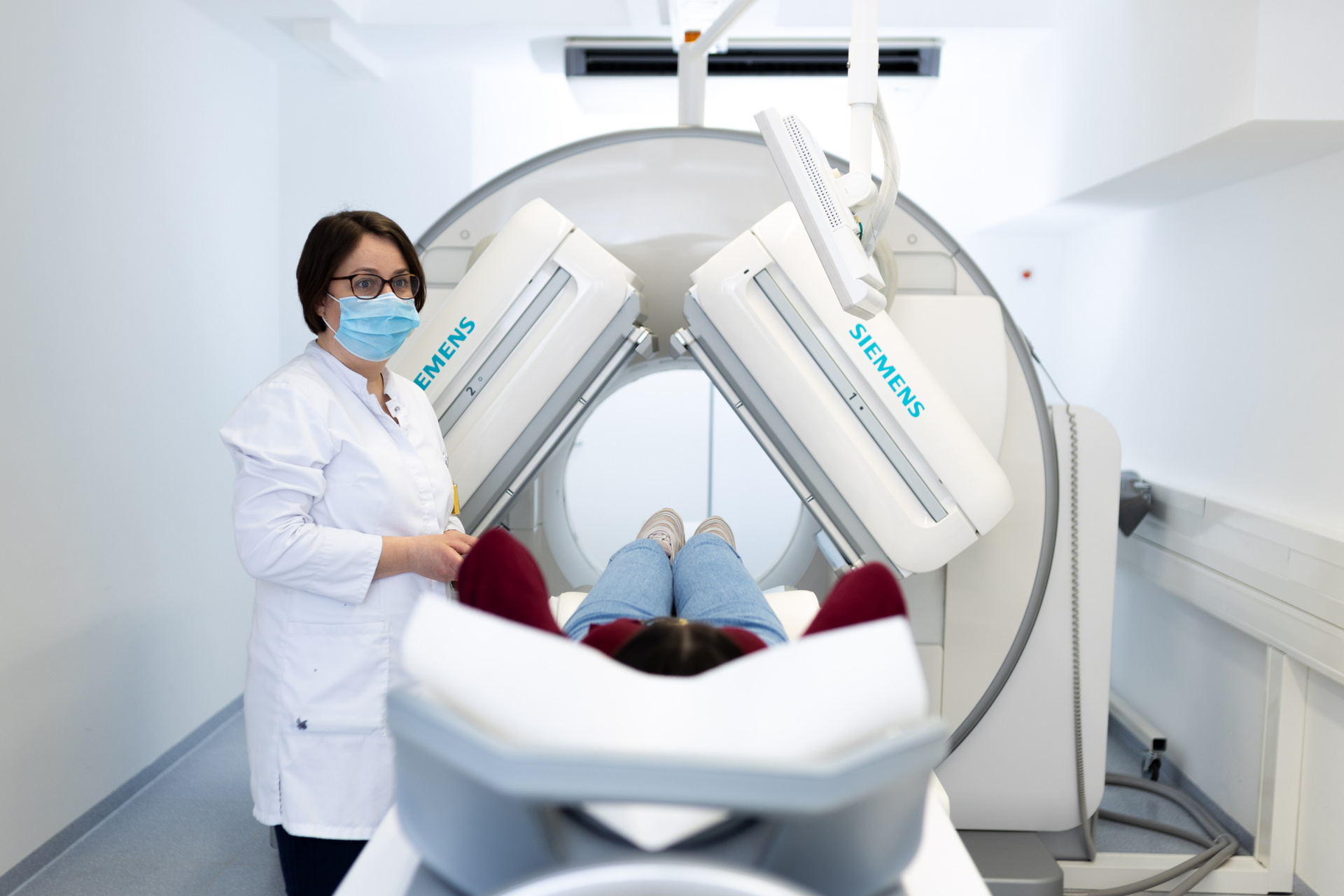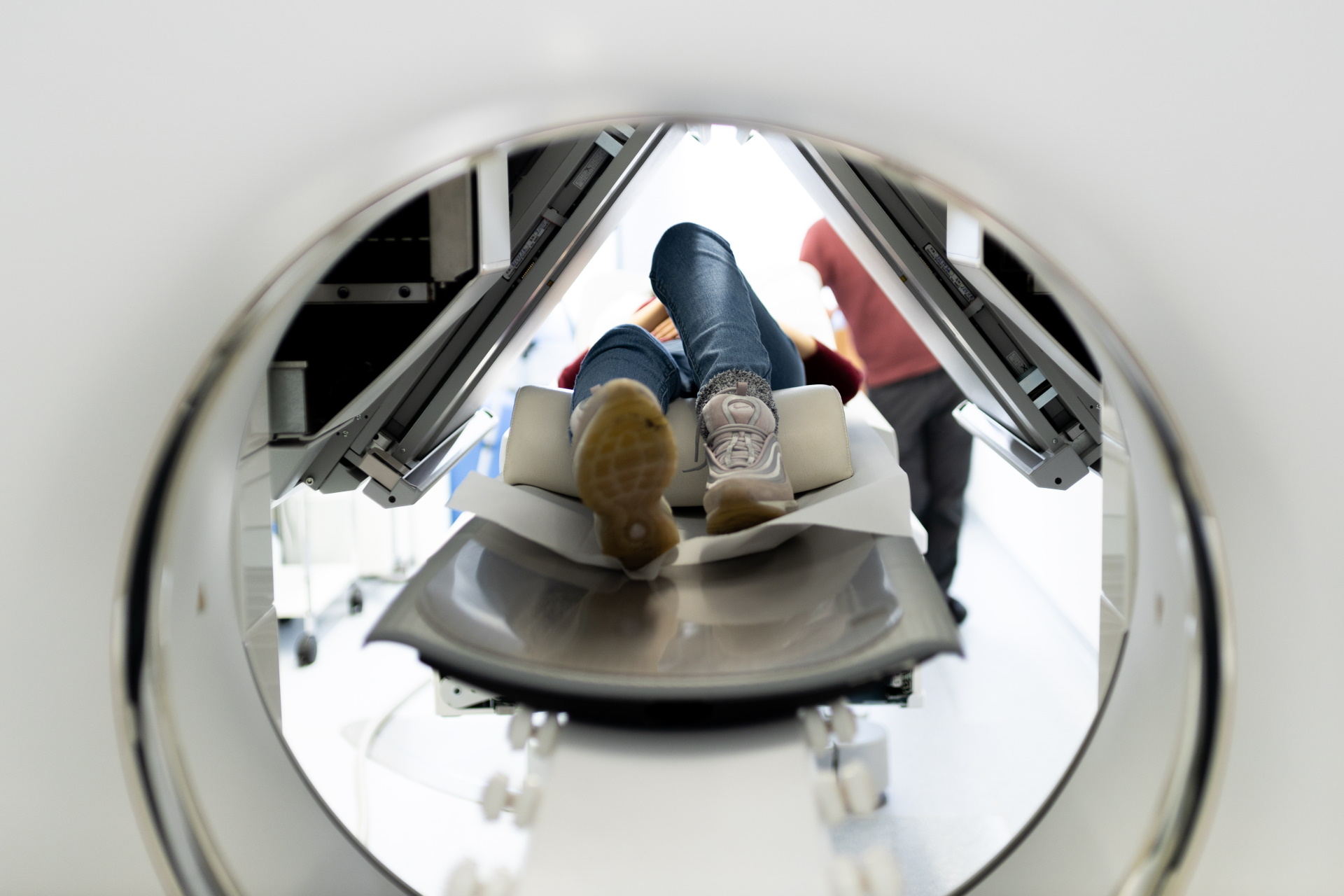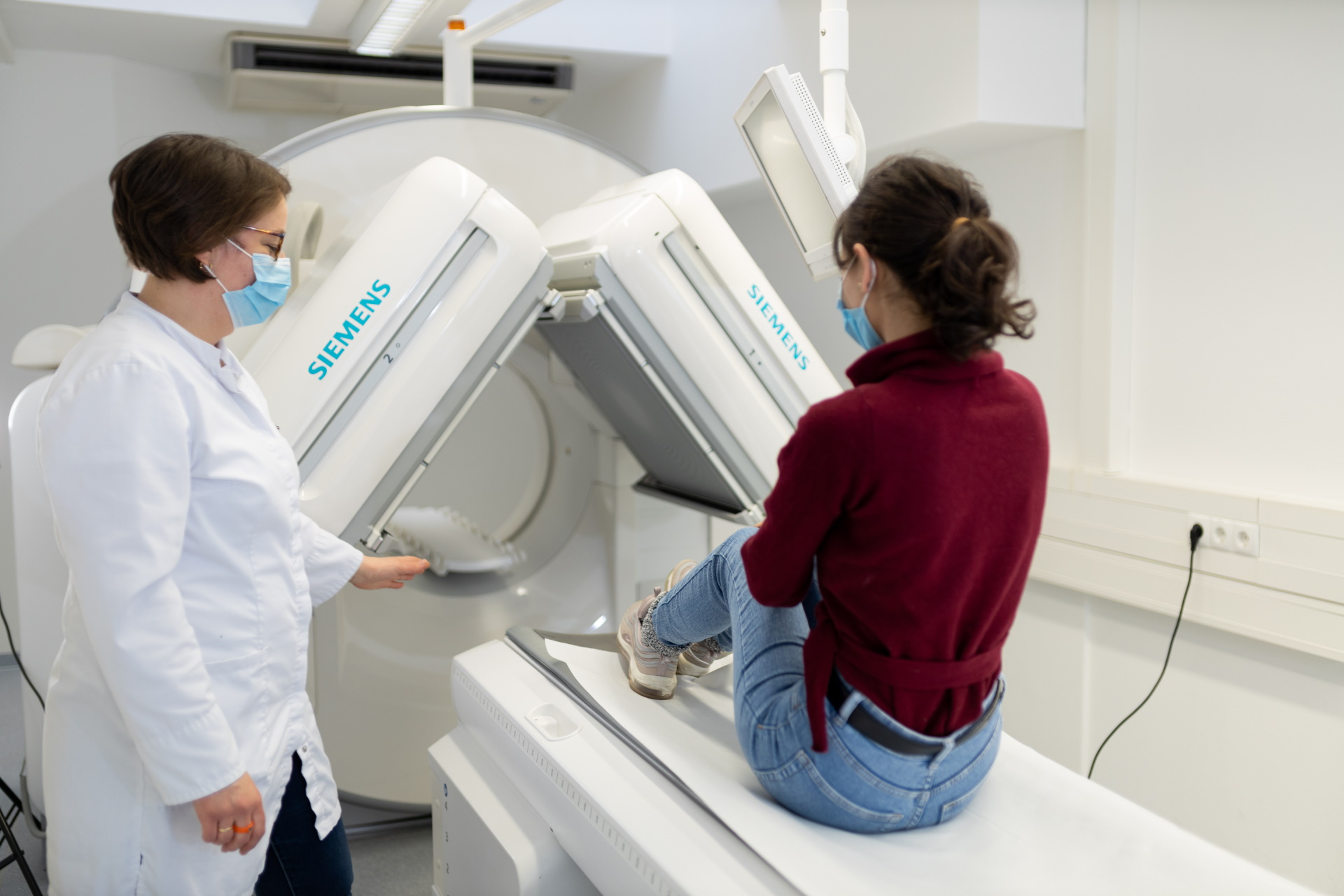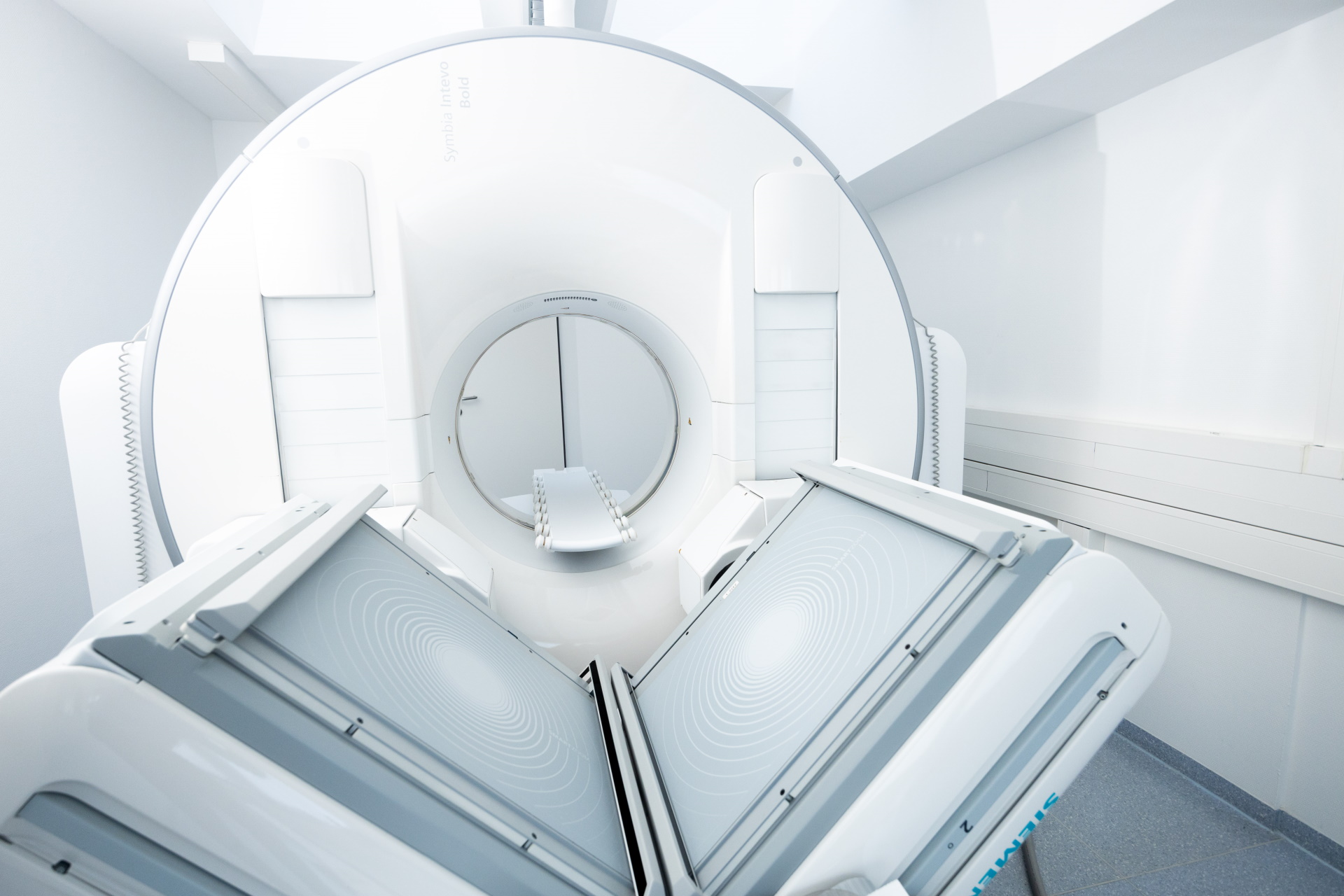SPECT/CT examination
Functional diagnostics for heart, brain, bones and thyroid gland
A SPECT/CT examination is a combination of single photon emission tomography (SPECT) and computed tomography (CT). Using a radioactive tracer, SPECT can visualize metabolic changes that can be precisely localized anatomically by fusion with CT.
The method can be used to address oncological, cardiological, orthopedic, neurological and endocrinological issues.
Duration of examination
Strongly varies
Areas of application
Oncology, Orthopedics, Neurology, Cardiology, Endocrinology
Health insurance benefit
Yes, with bank transfer
Possible applications
Used for a wide range of applications, SPECT / SPECT/CT is particularly useful when examining bones, the heart, the brain and the thyroid gland. Here, we provide you a detailed overview of the examinations performed at MCB.
Whole-body bone scintigraphy can be used to specifically look for bone metastases or TEP loosening as well as detect amyloidosis of the heart muscle.
SPEC/CT is used to examine the heart for coronary artery disease and assess the need for cardiac catheterization.
ATTR amyloidosis can be detected by means of scintigraphy.
Using a DaTSCAN, the brain can be examined for signs of Parkinson’s disease.
Thyroid tumor scintigraphy (MIBI) is used to detect thyroid tumors. Parathyroid scintigraphy helps in the search for thyroid adenomas.
Each of the examinations performed with a SPECT/CT is tailored especially for you. Our specialist staff will provide detailed procedural and preparatory instructions when you book your appointment.
In order to be able to obtain a proper image, jewelry and other metal objects, such as clothing containing metal (e.g. through buttons) or belts must be removed. Please make sure that your clothing and shoes can be taken off and put back on easily.
All of our SPECT/CT services are covered by public health insurance.
Combining the strengths of a nuclear medicine examination (functional imaging) with the precision and speed of a computed tomography (high-resolution anatomical imaging), SPECT/CT examination provides significantly more accurate results. The “tube” (gantry) is very short and, with a diameter of 70 cm, offers you the utmost comfort. While the device adjusts the CT radiation in real time according to individual body size and shape, you are assured the lowest possible radiation dosage for extra protection.



